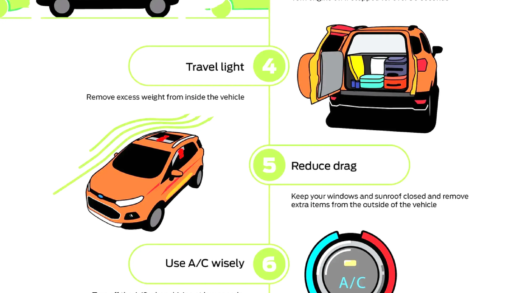Electric vehicles (EVs) are designed with safety in mind, especially in wet conditions. They feature sealed electrical components, advanced traction systems, and ground fault detection to minimize electric shock risks. EVs generally outperform gasoline vehicles in terms of stability and handling in rain, thanks to their low center of gravity and effective braking systems. Common myths about electric vehicle safety include misconceptions about danger in water and performance in rain, which are largely unfounded. Personal anecdotes from EV drivers reinforce their reliability and safety in wet conditions.
Will I Get Shocked? The Truth About Electric Cars and Water
Electric vehicle safety in water is a common concern among potential and current electric car owners. Many people wonder, “Will I get shocked if I drive through puddles?” The short answer is: it’s highly unlikely. Modern electric vehicles (EVs) are designed with safety in mind, featuring well-sealed electrical components that prevent water ingress.
According to industry standards, electric vehicles undergo rigorous testing to ensure they can withstand wet conditions. This includes tests for water exposure effects, ensuring that components are protected against moisture. For instance, EVs typically have high IP ratings, which indicate their level of protection against dust and water. Vehicles with an IP67 rating can be submerged in water up to 1 meter for 30 minutes without suffering damage.
Moreover, electric cars are built with several safety features that mitigate shock risks. For example, the battery packs are encased in sturdy housings to prevent water from reaching the electrical systems. Additionally, many EVs come equipped with ground fault detection systems that automatically shut down the vehicle’s electrical systems in case of any anomalies, including water exposure.
How Does Water Affect Electric Vehicle Systems?
Water exposure can have various effects on electric vehicle systems, but it’s essential to understand that these effects are often minimal due to the robust engineering behind EVs. Electric vehicles are designed to handle wet conditions, but certain components can still be affected by prolonged water exposure.
1. Battery Systems: While electric vehicle batteries are sealed, extended submersion can lead to potential issues like corrosion or short circuits. However, this is rare and usually only occurs in extreme situations.
2. Electrical Components: Water can affect the sensors and wiring within the vehicle. For example, if water seeps into connectors, it may cause temporary malfunctions. Yet, most vehicles are equipped with waterproof connectors to prevent this from happening.
3. Braking Systems: Electric cars utilize regenerative braking systems, which can also be affected by wet conditions. However, the transition to traditional braking is seamless, ensuring safety is maintained even in heavy rain.
Understanding how water affects electric vehicle systems is crucial for drivers, especially when navigating wet roads. Despite the potential risks, manufacturers prioritize safety, making electric vehicles a reliable option in various weather conditions.
Driving Electric Cars in Rain: Is It Safe?
Driving electric cars in rain is generally safe, but there are precautions to consider. Electric vehicles are equipped with safety features that enhance stability and traction in wet conditions. However, it’s essential to drive cautiously.
1. Tire Condition: Ensuring that tires are in good condition is vital for safe driving in the rain. Worn-out tires can lead to hydroplaning, regardless of the vehicle type.
2. Braking Distance: Wet roads increase stopping distances. Electric vehicle drivers should maintain a greater distance from the car ahead to allow for extended braking time.
3. Visibility: Rain can impair visibility, so using headlights and ensuring wipers are functional is crucial.
In summary, while electric vehicles are safe to drive in the rain, following basic safety practices is essential. Understanding these factors can help drivers navigate wet conditions confidently.
Safety Features of Electric Vehicles Against Electric Shocks
Electric vehicle safety in water is enhanced by a range of safety features designed to prevent electric shocks. Key components include:
- Sealed Battery Compartments: Batteries are housed in robust enclosures that prevent water ingress.
- Ground Fault Detection: This system automatically shuts down electrical components if a fault is detected, mitigating shock risks.
- Waterproof Connectors: Electrical connections are designed to resist water exposure, ensuring reliable operation even in wet conditions.
- Advanced Insulation: Electric vehicles utilize high-quality insulation materials to protect electrical systems from moisture.
These features work together to ensure that electric vehicles remain safe to operate in wet conditions. When you drive through puddles, the risk of electric shock is minimal due to these engineered safeguards.
What to Do If My Electric Vehicle Gets Submerged?
If your electric vehicle gets submerged, immediate action is crucial to ensure safety. Here’s what you should do:
- Stay Calm: Panic can cloud your judgment. Stay calm and assess your situation.
- Exit the Vehicle: If it is safe to do so, exit the vehicle quickly, avoiding any contact with water if possible.
- Call for Help: Contact emergency services if necessary, especially if you or others are injured.
- Do Not Attempt to Restart: Do not turn the vehicle back on until it has been inspected by professionals.
- Get it Inspected: Have a qualified technician check for any water damage or electrical issues before using the vehicle again.
These steps can help ensure your safety and the integrity of your electric vehicle after it has been submerged.
Can Electric Cars Short-Circuit in a Puddle?
Electric cars can short-circuit in a puddle, but it’s quite rare due to their design. Most electric vehicles are built to prevent water from reaching sensitive electrical components. Here’s how:
- High IP Ratings: Many electric cars have high Ingress Protection (IP) ratings, indicating their resistance to water.
- Sealed Electrical Systems: Components are sealed to prevent water intrusion, significantly reducing the risk of short circuits.
- Automatic Safety Features: Vehicles are equipped with safety systems that detect anomalies and shut down electrical functions as needed.
While the risk exists, the combination of robust engineering and safety features greatly minimizes the likelihood of electric vehicles short-circuiting in wet conditions.
Electric vs Gasoline Vehicle Safety in Wet Conditions
When comparing electric vehicle safety in water to gasoline vehicles, several factors come into play. Electric vehicles (EVs) generally have an edge in safety due to their advanced engineering and safety features. Here are key points to consider:
- Electrical Safety: Electric vehicles are designed to prevent electrical shock in wet conditions, thanks to sealed battery compartments and ground fault detection systems. Gasoline vehicles, while also safe, rely on different safety measures that do not provide the same level of protection against electric shock.
- Braking Performance: EVs use regenerative braking, which can be effective even in wet conditions. Gasoline vehicles may experience reduced braking efficiency due to water on the brakes, potentially leading to longer stopping distances.
- Weight Distribution: EVs often have a lower center of gravity due to their battery placement, improving stability in wet conditions. This can reduce the risk of skidding compared to gasoline vehicles.
- Handling and Traction: Both vehicle types can face challenges in wet conditions, but EVs typically have better traction control systems that help maintain grip on slippery surfaces.
In conclusion, while both electric and gasoline vehicles have their safety features, electric vehicles tend to offer enhanced protection against water-related risks, making them a reliable option in wet conditions.
Common Myths About Electric Vehicle Safety
Many misconceptions surround electric vehicle safety, particularly in wet conditions. Here are some common myths debunked:
- Myth 1: Electric Cars Are Dangerous in Water: This is false. Modern electric vehicles are built to withstand water exposure and have multiple safety features to prevent electric shocks.
- Myth 2: Electric Vehicles Can’t Handle Rain: Many believe that rain can severely impact electric vehicle performance. In reality, EVs are designed for wet conditions, with features that enhance safety and stability.
- Myth 3: Submersion Means Total Loss: While submersion can damage any vehicle, electric cars have specific safety protocols and design features that help mitigate damage from water exposure.
- Myth 4: All Electric Vehicles Are the Same: Different models have varying safety ratings and features. It’s essential to research individual vehicles to understand their capabilities.
Understanding these myths can help consumers make informed decisions regarding electric vehicle safety.
Personal Anecdotes: Real Stories from Electric Vehicle Drivers
Electric vehicle drivers often share their experiences in wet conditions, providing valuable insights. Here are a few anecdotes:
- Driver 1: “I drove through a heavy downpour, and my Tesla handled beautifully. The traction control kept me stable, and I felt completely safe.”
- Driver 2: “I was worried about driving through puddles, but I learned that my Nissan Leaf was designed to handle it. I had no issues, and the car felt secure.”
- Driver 3: “After my car was submerged in a shallow flood, I followed the recommended steps and had it inspected. Thankfully, it was fine, thanks to its waterproof features.”
These real-life experiences highlight the reliability and safety of electric vehicles in wet conditions, reinforcing the importance of understanding the technology behind them.





Comments are closed.